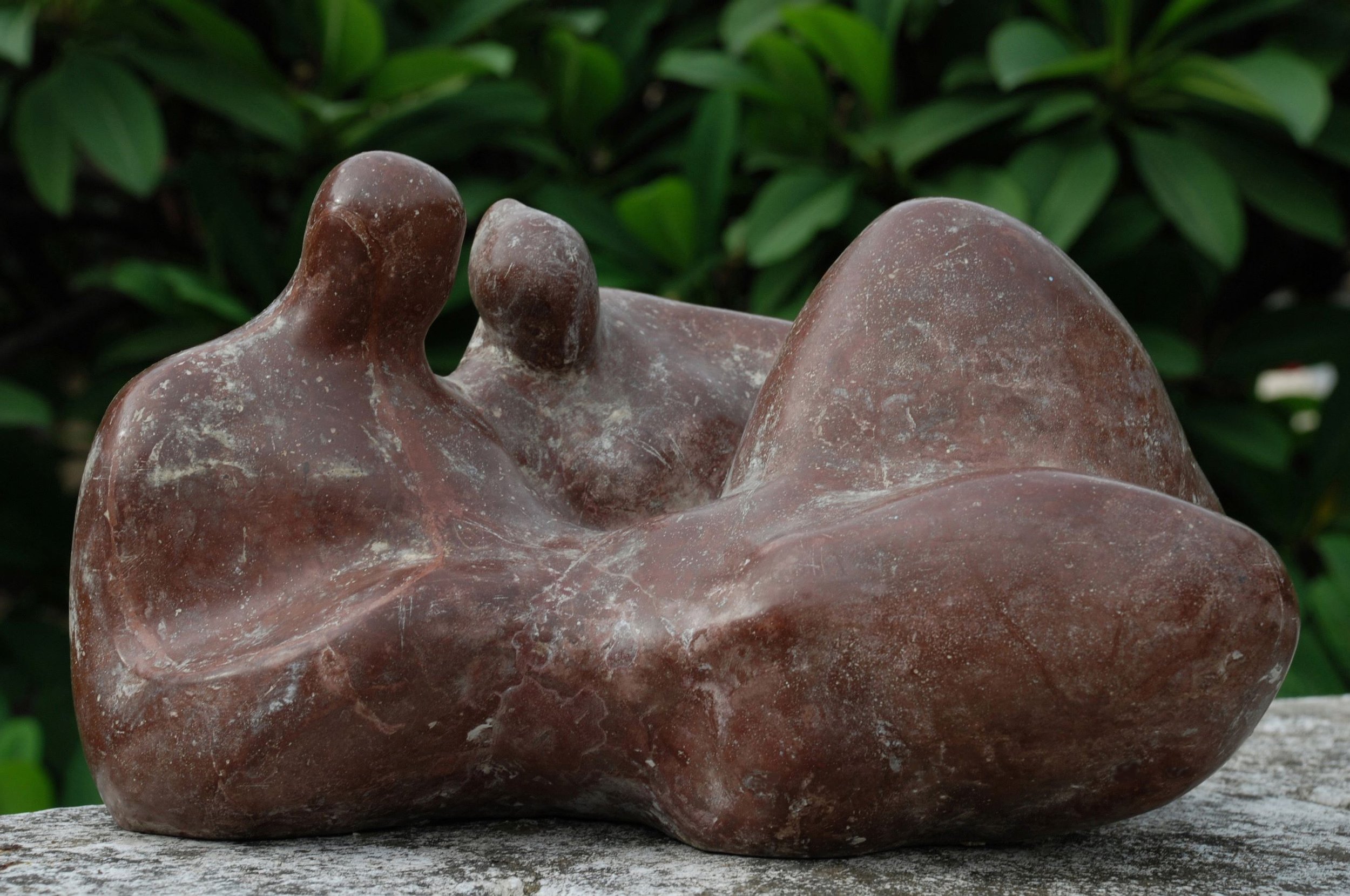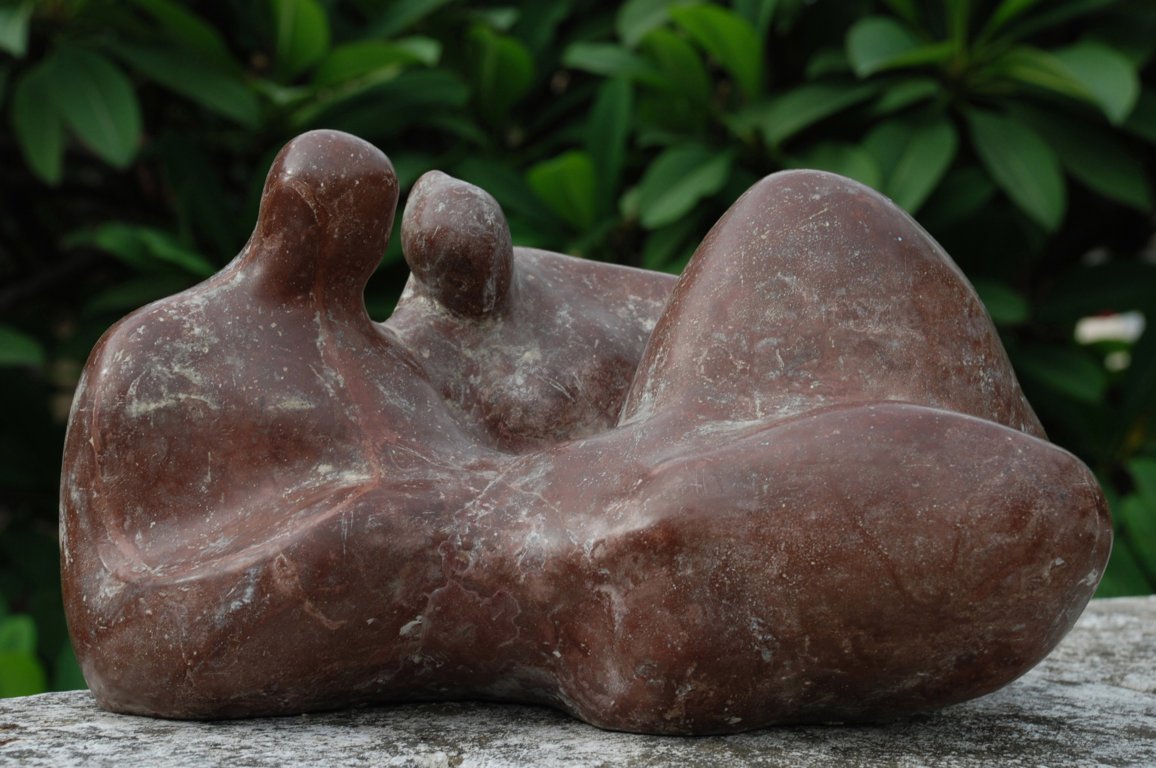
Sculpture as Body in the Mirror of Desire by Sarbari Roy Choudhury
August 20, 2019 – September 23, 2019 at Akar Prakar, Kolkata
Sarbari Roy Choudhury's strength lies not in shaking up our conception of art or sculpture but in carrying its known possibilities to a level of perfection and subtlety so rare that it assumes an aura of uniqueness. This makes him stand out not only among his contemporaries but also in the history of modern Indian sculpture.
As a sculptor Sarbari's sole subject was the human body, and essentially a modeller, he turns clay into sensuous flesh with great sensitivity. He approached the body in two different ways. As a portraitist he saw it primarily as the human head and on a scale close to life. He saw the head as a compressed core, and as a portraitist his effort was to transform it into a malleable surface, animated by discrete emotions. Being an ingrained connoisseur of music, several of them were of musicians and whether the head stayed meditative and rock-like as in the portrait of Ali Akbar, or was worked into a musical tremor as in the case of Bade Gulam Ali Khan, or moved into a restless ocean of emotions as in the portrait of Siddheshwari Devi was determined by the character of their musical expression. In other portraits too, of friends and acquaintances whose heads attracted his attention, he bestowed a mood that they evoked in him. The attempt to give a stable expression to the fleeting pervaded all his portraits to some degree.
In his other sculptures he attempted the opposite. In them he focused on the human body, almost exclusively female, which he experienced as a vast field fertilised by centuries of primeval desire of both men and women, but always projected onto the female body by the male sculptor. Made vast and fecund by desire they lost the definiteness of form, their framing contours, and became, to him, an organ-less mass of flesh, so to speak. They engulfed him like sea or dunes animated by the elements, into which he was constantly pulled down. In an act of rescue and self-recovery as a sculptor, again and again, he compressed its amorphous vastness into a hard core, an object that can be contained within one's palms, sometimes even between fingers, and caressed. In them he gave shape and brought the unruly body within his grasp, quite literally. While doing this the head was either loped off or reduced to a stump and denied its separateness and locus. Similarly, at times the body was reduced to a psychologically charged synecdoche, to an erogenous zone.
As he tamed the female body and made it manageable by miniaturising it, the turbulent waves, the fetishistic charge that overawed him were smoothened and given a harmonious wholeness by the sculptural forms he invented and the emotions were sublimated. There are elements in his working process—like the compression and transformation of the amorphous clay into sensual bodies, and the illusory monumentality he inscribes into his miniature sculptural forms—which suggest that this was a fictional play enacted in his mind, not a reflection of real manipulations performed on the external world. And those who knew him well will immediately recognize this. In person he was affable, courteous, deferential, even a bit ceremonious, anything but seductive. However, having achieved such a feat of sublimation he was occasionally tempted to take off the lid to see how the genie would blow up, and from time to time he enlarged one of his sculptures—but usually not beyond a foot and a half or two. Only two sculptures (Reclining Woman and the first version of Gate of Heaven) were enlarged beyond this size. These were cast in cement and the others remained in plaster.
I believe, he realised that amorphous flesh compressed into appealing sculptural forms with commendable structured clarity cannot be always enlarged without loosening some of its structural compactness, and changing its affective charge, and more importantly, without revealing some of the elements he wished to sublimate. However, they have been cast in bronze posthumously and are being exhibited for the first time. Their reception will depend to a great extent on what individual viewers bring with them, but they will give us a chance to compare what he tucked away with what he chose to show, and some general observations can be drawn from it. Seeing them together, for instance, will reveal to us his view of the world more clearly and also draw attention to the sleight of hand with which he modified it as a sculptor, and, thereby, give us a clearer understanding of the main burden of his sculptural oeuvre, namely, sculpture as body in the mirror of desire explored by the mind's eye.
R. Siva Kumar
Sarbari Roy Choudhury | Gate of Heaven 2/9 | Bronze | 38 x 43.5 x 29 in | 1977
Sarbari Roy Choudhury | Head of a Woman 2/9 | Bronze | 39.4 x 20 x 21 in | 2008
Sarbari Roy Choudhury | Reclining Man 3/9 | Bronze | 5 x 16.5 x 6 in | 1980
Sarbari Roy Choudhury | Reclining Woman 4/9 | Bronze | 5 x 11 x 4.5 in | 1982
Sarbari Roy Choudhury | Standing Woman I 2/9 | Bronze | 16 x 5 x 3.5 in | 1991
Sarbari Roy Choudhury | Standing Woman II 2/9 | Bronze | 15 x 5 x 5.5 in | 1970
Sarbari Roy Choudhury | Torso 2/9 | Bronze | 14 x 8 x 3.5 in | 1970
Sarbari Roy Choudhury | Reclining Woman 4/9 | Bronze | 35 x 43 x 19.5 in | 1977
Sarbari Roy Choudhury | Dharma 8/9 | Bronze | 13 x 14 x 7 in | 1958
Sarbari Roy Choudhury | Head of a Woman 4/9 | Bronze | 16.5 x 10 x 9 in | 2006
Sarbari Roy Choudhury | Rinku 5/9 | Bronze | 29.5 x 17 x 10 in | 1986
Sarbari Roy Choudhury | Seated Man 5/9 | Bronze | 18 x 16 x 10.5 in | 1954-55
Sarbari Roy Choudhury | Seated Woman 4/9 | Bronze | 22.5 x 12.5 x 10 in | 1964
Sarbari Roy Choudhury | Siddheshwari Devi 8/9 | Bronze | 12 x 13 x 10 in | 1973
Sarbari Roy Choudhury | Skipping 5/9 | Bronze | 34 x 24.5 x 8.5 in | 1996
Sarbari Roy Choudhury | Standing Woman 3/9 | Bronze | 61.5 x 14 x 14.5 in | 1964
Sarbari Roy Choudhury | Ustad Ali Akbar Khan 8/9 | Bronze | 13 x 10.5 x 9 in | 1967
Sarbari Roy Choudhury | Hunuman 4/9 | Bronze | 16.5 x 4.5 x 5.5 in | 1962
About Sarbari Roy Choudhury
Born in Ulpur, East Bengal (now Bangladesh), Sarbari Roy Choudhury (1933 - 2012) graduated in Sculpture from the Government College of Art & Craft, GCAC Kolkata. He later studied under the sculptors Prodosh Dasgupta and Sankho Chaudhuri at the M.S. University, Baroda. During his study tour in Europe Roy Choudhury visited Paris and Italy, and was able to meet two great masters, Alberto Giacometti and Ossip Zadkine, who appreciated his small bronzes. He studied sculpture at the Academia dei Belle Arti, Florence, Italy, interacting with Marino and Marini, Henry Moore. Back in India, he joined the Department of Sculpture at Visva Bharati University, Santiniketan.
He was connoisseur of Hindustani and Carnatic classical music, who collected rare albums and recordings. His interest and engagement with music was evident from his sculptures of singers such as Ustad Bade Gulam Ali Khan (1971) or Siddheshwari Devi (1964) who are lost in the rapture of their recitals.
He had many solo and group exhibitions in India and overseas, including exhibiting at the Paris Biennale in 1965. His last solo show, posthumously held in 2012, was organised by the Ministry of Culture, along with the Lalit Kala Akademi. In 2013, his work was part of a group show ‘Contours and Volumes’, which was curated by Nandini Ghosh at National Gallery of Modern Art, Mumbai. Akar Prakar Contemporary, New Delhi mounted a group show 'Nirmiti' in 2015, which included his sculptures as well.
His works are in the collections of the National Gallery of Modern Art, New Delhi and at The Madam Shenue Museum, Florence, Italy and in many private collections across the world. A major publication on his work was released by the Lalit Kala Akademi, Ministry of Culture, India in 2008.
He passed away in Kolkata in Feb 2012.



















